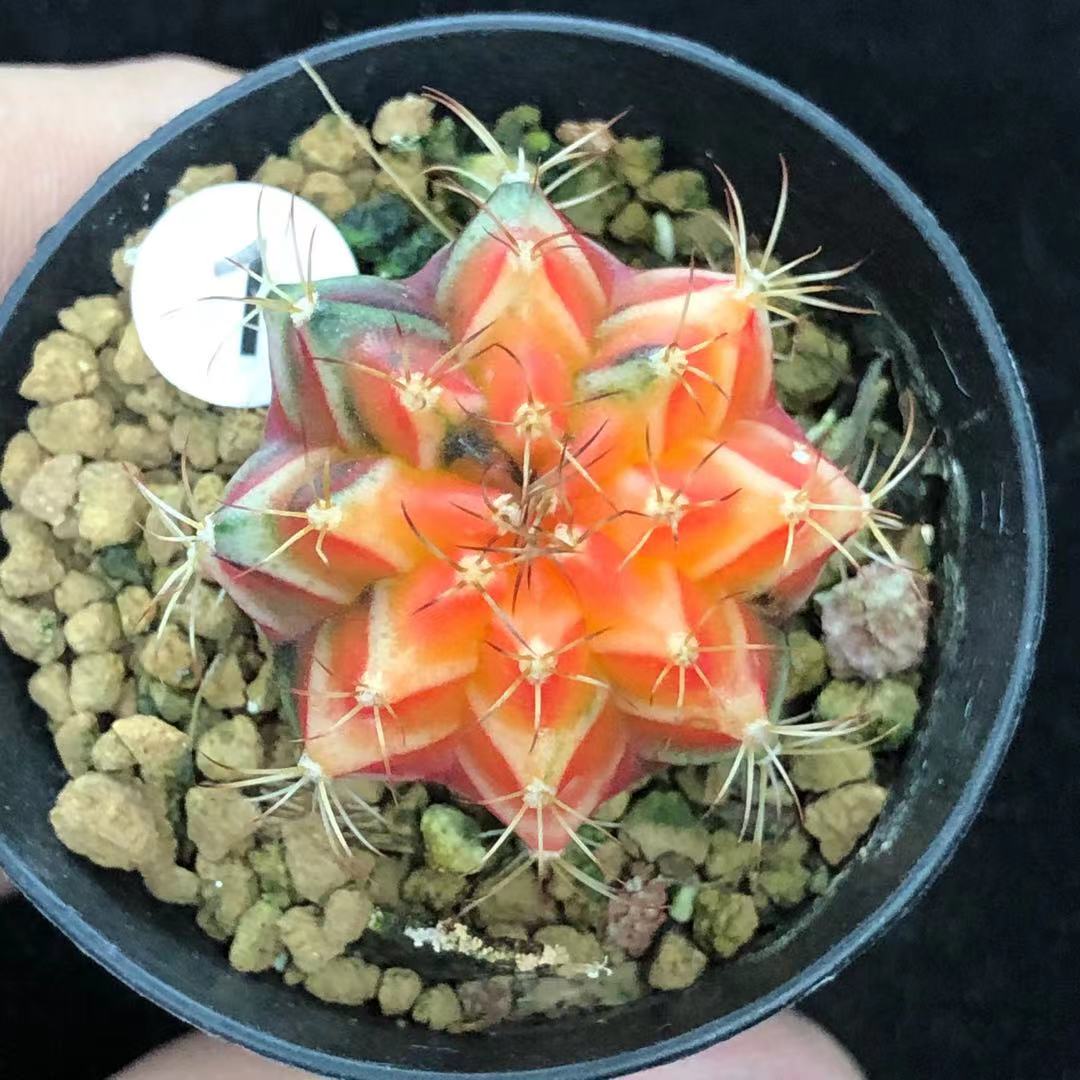Main Varieties: Gymnocalycium mihanovichii var. friedrichii Werderm., with a spherical diameter of 3cm to 5cm. The color of the epidermis varies depending on the variety. In addition to the common red Gymnocalycium, there are also pink, yellow, white, purple, and green varieties, as well as variegated varieties such as Gymnocalycium 'Fancy' which combines red, pink, purple, and green colors. The spherical body is green, with a red "crane's head" near the top growth point, and a red spherical body with a yellow ring-shaped stripe called the "golden belt." In addition, there are flattened fan-shaped mutant varieties called Gymnocalycium 'Crown'.
Appearance Characteristics: Perennial succulent plants. The stem is flat-spherical, with a diameter of 3-4 cm, and is bright red, deep red-orange, pink, or purple-red in color, with 8 ridges and prominent transverse ridges. Mature spherical clusters produce offsets. The areoles are small, without central spines, and radial spines are short or may fall off. The flowers are slender, funnel-shaped, borne on the top of the areole, pink in color, and bloom in spring and summer. The fruits are elongated and spindle-shaped, red in color. The seeds are blackish-brown.
Humidity: Requires 60%~75% humidity. If the indoor temperature is low in winter, it should be kept relatively dry.
Temperature: The optimal growth temperature is 15°C~32°C. However, it can withstand temperatures as high as 40°C and as low as 2°C (when the potting soil is dry).
Light Requirement: Adequate sunlight is required except during the peak summer months.
Watering: Except in winter, water should be applied as needed, usually maintaining moderate or slightly dry soil moisture.
Soil: The cultivation soil should consist of peat, turf, and a small amount of African violet soil mixed with perlite. The pH should be slightly acidic to neutral, ideally ranging from 6.0 to 6.5. When repotting, do not place pot shards at the bottom of the pot, but rather add a small amount of ceramic granules.
Propagation Method: Gymnocalycium mihanovichii var. friedrichii Werderm. lacks chlorophyll and cannot photosynthesize or produce nutrients on its own, so it must be grafted onto a stock plant to provide nutrition for normal growth.
Disease and Pest Control: Stem rot and gray mold are common diseases. They can be treated by spraying with a 50% carbendazim wettable powder solution at a dilution of 2500 times. Red spider mites can be a problem in hot and humid conditions with poor ventilation, and can be controlled by spraying with a 40% dimethoate emulsifiable concentrate solution at a dilution of 1000 times.
Cultivation Notes: Soil mix should prioritize good drainage, and the plant should be placed in a well-ventilated location.
Suitable Spaces: Desks, window sills, balconies.
Medicinal Value: The root bark contains peonidin, paeoniflorin, as well as benzoic acid, phytosterols, alkaloids, and other substances.
Diseases and Pests: Leaf spot disease, rust disease.
